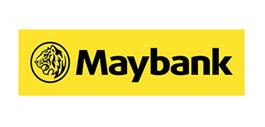 Kuala Lumpur – Malayan Banking Berhad (Maybank) successfully conducted the two-day ABA Short Term Visiting Program in its headquarters in Kuala Lumpur on October 18-19, 2018. The program, attended by 24 bank delegates from 13 different financial institutions in 8 countries, featured 7 banking subjects, presented by senior managers of Maybank.
Kuala Lumpur – Malayan Banking Berhad (Maybank) successfully conducted the two-day ABA Short Term Visiting Program in its headquarters in Kuala Lumpur on October 18-19, 2018. The program, attended by 24 bank delegates from 13 different financial institutions in 8 countries, featured 7 banking subjects, presented by senior managers of Maybank.
The Welcome
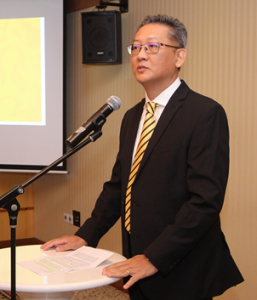 The two-day program started with a welcoming remarks given by Ronnie Royston Fernandiz, Finance Head at the Group Global Banking.
The two-day program started with a welcoming remarks given by Ronnie Royston Fernandiz, Finance Head at the Group Global Banking.
Right after the speech, ABA Deputy Secretary-Treasurer Mr. Mig Moreno and Mr. Ronnie Royston Fernandiz from Maybank, exchanged tokens of appreciation in representation of their respective institutions. Then, all the participants proceeded to pose for the group photo and engaged in the first opportunity for networking before starting the first session.
The First Day
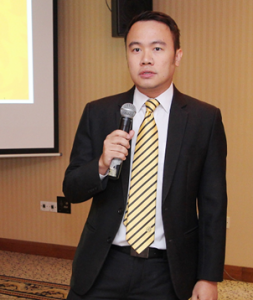 The first session on “Maybank – Introduction” was initiated by Mr. Jason Lim Tsu Yang, Executive Vice-President Head at the Group Strategy & Business Development, who introduced the current Maybank’s status in Malaysia, the ASEAN region and globally.
The first session on “Maybank – Introduction” was initiated by Mr. Jason Lim Tsu Yang, Executive Vice-President Head at the Group Strategy & Business Development, who introduced the current Maybank’s status in Malaysia, the ASEAN region and globally.
He explained that since its inception in 1960, Maybank has grown to be a top-listed company in Malaysia, the 4th largest bank in the ASEAN market, with presence in 22 countries globally. Today, Maybank is No. 1 in Malaysia in conventional and Islamic finance. With more than US$189 billion in assets, Maybank is indeed a banking powerhouse offering a full menu of banking services with clear 2020 target of humanizing financial services by providing customer-centric, universal high-performing financial services.
According to Mr. Lim, the strategic objectives of Maybank are to become (1) A top ASEAN Community bank, (2) An ASEAN wholesale bank, (3) An ASEAN leading insurer, (4) A Global leader in Islamic finance, and (5) A Digital bank of choice.
Mr. Lim also proceeded to explain the acronym of the Maybank’s mascot, the Tiger: T stands for teamwork, I for integrity, G for growth, E for excellence & efficiency, and finally R for relationship building.
To conclude, Mr. Jason Lim emphasized the importance of leadership and the necessity to engage and upgrade the bank’s talent. For Maybank, the organization needs to achieve global acumen to understand the global business environment, understand complexity to respond to convoluted issues proactively, and set expectations to track performance.
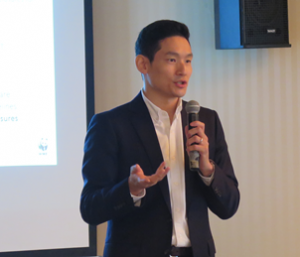
The second presentation of the day on “Global Drivers of ESG Integration” was given by Dr. Keith Lee, Sustainable Finance Engagement Manager, from World Wildlife Fund, Malaysia; who discussed the integration of sustainability issues (ESG – Environmental, Social and Governance) into the financial world.
Dr. Lee explained that finance, markets and governance are fundamental to sustainability solutions, and to achieve them, WWF has built a large network of strategic partners such as bank regulators, stock exchanges, and industry associations. This collaboration allows WWF to develop science-based targets and standards for companies and financial institutions.
Collaboration allows for sustained development that could create billions of dollars in business opportunities and new financial needs, Dr. Lee said. Furthermore, he also explained that ESG is linked to lower cost of capital and better operational performance. In fact, according to the Findings by Arabesque Partners and University of Oxford (2015) based on a review of 200+ studies, 90% show that sound sustainability lower cost of capital, 80% show that stock price performance is influenced by sustainability and 80% show that solid ESG results in better operational performance. In fact, equity research highlights share outperformance among the more sustainable stocks.
From the investor’s perspective, the Financial Stability Board released a report in 2017 about the Taskforce for Climate Related Financial Disclosures (TCFD) that facilitates the consideration of climate risk into banking valuations. Moreover, Dr. Lee explained that sustainability is not only about climate change but water deforestation and human rights as well.
Dr. Lee also presented recent environmental cases such as the 2016 Dakota Access Pipeline and others that became reputational and financial threats; thus pressuring financial institutions to become more transparent and clear on its money trail.
To conclude, Dr. Lee presented areas where WWF can help the banking sector, such as (1) building capacity on ESG integration, (2) Sharing insights, (3) Facilitating multi-stakeholder for innovative green financing, (4) Developing guides, and (6) Monitoring ESG integration.
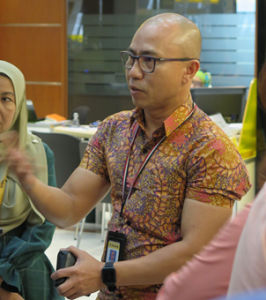 The third session on “Banking Hall Tour” was conducted by Mr. Nor Saadah Bt Abd Hamid who lead the 24 delegates through the lobby and first floor of Maybank’s headquarters. There, Mr. Hamid presented the front office procedures to welcome clients, attend to their needs and introduce services available in the customer service area.
The third session on “Banking Hall Tour” was conducted by Mr. Nor Saadah Bt Abd Hamid who lead the 24 delegates through the lobby and first floor of Maybank’s headquarters. There, Mr. Hamid presented the front office procedures to welcome clients, attend to their needs and introduce services available in the customer service area.
The session was very dynamic with delegates engaged in extended Q&A about practical operational issues in the management of the customer area. The participating bankers had the opportunity to see how Maybank managed the customer experience practically and observed the customers’ flow throughout the first floor. Issues about service flow among the back offices, and design of workspace to achieve efficiency were discussed.
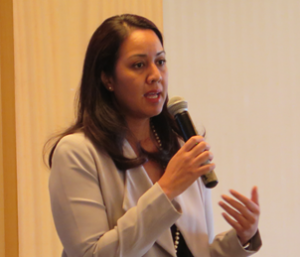
The fourth session on “Prospects & Challenges of Correspondent Banking for a regional bank in the context of ASEAN integration” was led by Ms. Narita Naziree Bt Ahmad Naziree, Head of Financial Institutions Group, Malaysia & EMEA Banks.
Ms. Narita argued that there are 5 global trends in banking: (1) Greater regulatory regimes, (2) Re-risking, (3) Deeper wallet, (4) Protectionism, and (5) Disruptor.
The regulatory regime brings stability to the system at a substantial cost together with re-risking. This situation in turn drives a national and regional consolidation of winners who in order to lead must (1) improve correspondent banking process, (2) Connect better, (3) Pay fast, and (4) Manage risk and regulations properly.
As the ASEAN integration gradually emerges into a real single market with 600 million people and US$7 trillion infrastructure investment by 2030, Maybank will utilize its strength of being the largest financial provider of Malaysia, a regional leader with global presence, the leader in Islamic finance with a strong financial base, enjoying investor support and solid rating, to take the leadership of the region.
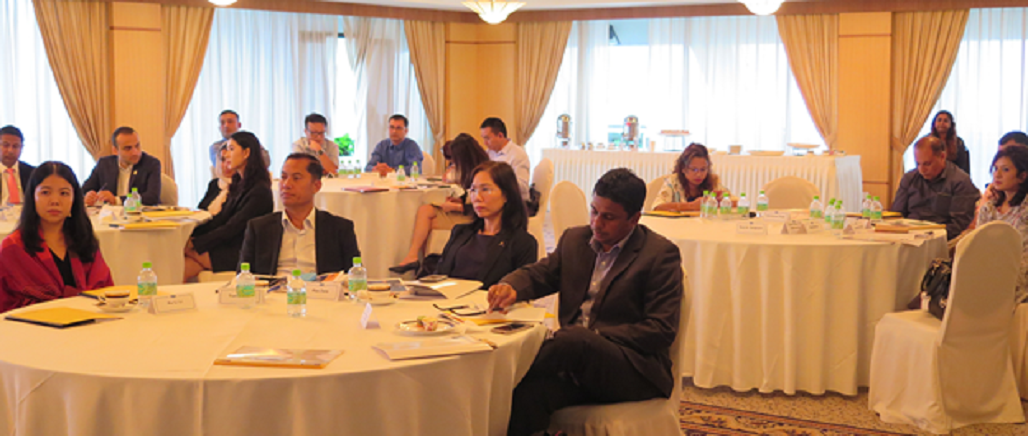
The second day
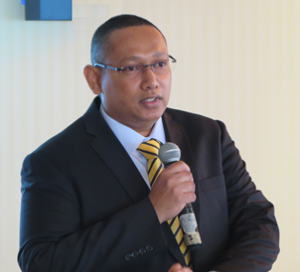 The second day, October 19th, comprised 3 different sessions, starting with the fifth presentation on “Maybank Compliance Transformation” presented by Mr. Sheikh Ahmad Yani Bin Sheik Ab Hamid, Head of Group Support Functions Compliance.
The second day, October 19th, comprised 3 different sessions, starting with the fifth presentation on “Maybank Compliance Transformation” presented by Mr. Sheikh Ahmad Yani Bin Sheik Ab Hamid, Head of Group Support Functions Compliance.
Sheikh Ahmad started the compliance session by presenting the strategic solution to the compliance challenges confronting an advanced financial institution such as Maybank. According to Sheikh Ahmad, a tough compliance framework is challenged by three kinds of risks: (1) Regulatory risk, (2) Customer risk, and (3) Employee risk.
These three fundamental challenges to compliance framework can be managed and mitigated by a strategy composed of five pillars: (1) Compliance structure and people, (2) Engagement model, (3) Compliance risk management model, (4) Financial crime risk management system and process, and (5) Compliance culture and reward model.
This transformation in the compliance regime rests on up-skilling staff competencies, and enhancing country level FCC/AML (Financial Crime Compliance/Anti Money Laundering)bench strength and support structure. This transformation is then institutionalized in departments and offices in charge of compliance throughout the bank.
In fact, Sheikh argued that compliance function can be conceptualized as a complementary task executed by the bank’s management on one side and regulators on the other side, while the board of director acts as an overall supervisor monitoring both sides.
In conclusion, Sheikh said that the compliance transformation must be geared towards a self-sustainable virtuous cycles of (1) Compliance risk identification, (2) Compliance mitigation, (3) Compliance monitoring, and (4) Compliance reporting, that will only succeed and self-sustain under a corporate culture that encourages every employee, from top to bottom, to be part of the line of defense against risk and threats.
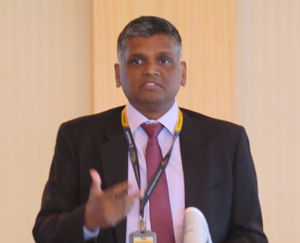 The sixth session on “Imperatives of Operational Risk Management” presented by Mr. Navukarasu Chelliah discussed the structure of non-financial risks and recommended management procedures starting with (1) Operational Risk Management, (2) Product & Change Management, (3) Business Continuity Management, and at the core, and (4) Recovery Plan.
The sixth session on “Imperatives of Operational Risk Management” presented by Mr. Navukarasu Chelliah discussed the structure of non-financial risks and recommended management procedures starting with (1) Operational Risk Management, (2) Product & Change Management, (3) Business Continuity Management, and at the core, and (4) Recovery Plan.
In fact, non-financial risk could be composed of several particular risks such as (1) IT risk, (2) Information risk, (3) Operational risk, (4) Regulatory risk, (5) Legal risk, (6) Cyber risk, (7) Conduct risk.
These comprehensive risks pose serious challenges that are normally hard to conceive and conceptualize into banking procedures. Thus, Navukarasu argued that people, information technology, governance and regulation are the best tools to implement protection and mitigation procedures.
To respond to these challenges, Maybank has established a series of policies based on (1) Commonality of purpose, values, and ethics above all, (2) Universal adoption and application, (3) A learning organization, (4) Timely, transparent, and honest communications, (5) Understanding of the value of effective risk management, (6) Responsibility – individual and collective, and (7) Expectation of challenge.
To conclude, study cases on responses to non-financial risk that Maybank have confronted were discussed. Nepalese participants also shared their operational response to the devastation produced by the earthquake in April 2015.
 The seventh session on “Access & Protection of Data for your organization” presented by Mr. Kushwant Singh, Head of Operational Risk at the Group Global Banking, was concentrated on the evolving challenges of protecting data.
The seventh session on “Access & Protection of Data for your organization” presented by Mr. Kushwant Singh, Head of Operational Risk at the Group Global Banking, was concentrated on the evolving challenges of protecting data.
According to Kushwant, bank professionals need to know first the different ways to access the data based on its location to maintain its security and confidentiality at all times.
Thus to assure data integrity and confidentiality, the organization needs to identify its ownership and maintain its safe access while monitoring the data flow. The issue is that access to data could be transformed equally into a risk, making day-to-day operations a constant challenge. In this situation, workforce’s awareness is a fundamental necessity.
The reality is that data must be protected in all stages and all accesses must be defended; from the individual decision not to open a seemingly innocuous email, to using complex passwords, encrypting transmitted emails, up to quarantining portable drives and safely disposing of print-outs.
Phishing was also part of the discussion to prevent the stealing of passwords, as well as the risks and threats that phishing possesses to financial institutions’ security.
As security challenges are further analyzed, the protection of data and safety in access are now even extended to indirect relationships up/down the stream, such as those shared even with external vendors and partners.
In conclusion, Mr. Singh stressed that data protection requires a proactive approach that incorporates (a) Continuous penetration & vulnerability assessments, and (b) Establishment of a recovery & response plan.
Throughout the two-day event, delegates enjoyed a series of coffee breaks featuring delicious local desserts that enhanced an atmosphere of camaraderie. A sumptuous lunch was served each day at Maybank’s 51st floor restaurant. The two-days event was indeed a fabulous display of Maybank’s banking expertise, generous know-how sharing and warm hospitality.
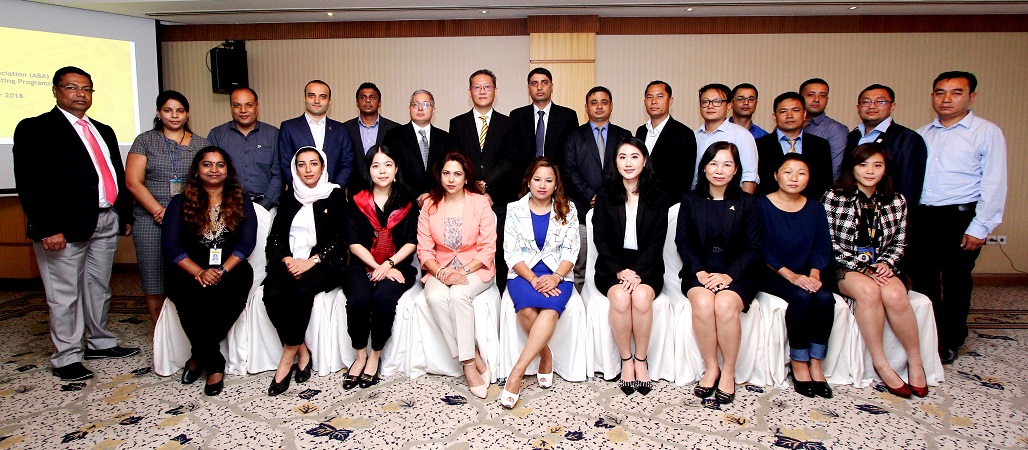
List of participants.
Bhutan
(1) Karma Dorji, Bank of Bhutan
(2) Yadhu Kumar Pokhrel, Bank of Bhutan
(3) Sandeep Kumar Khati, Bank of Bhutan
(4) Wangchuk Pem, Bank of Bhutan
(5) Karma Dorji, Bank of Bhutan
Cambodia
(6) Seng Kimheng, Prince Bank
(7) Tang Sokkhim, Prince Bank
(8) Panha Net, Rural Development Bank
(9) Puli Tuy, Rural Development Bank
(10) Tom Piseth, Vattanac Bank
(11) Ros Dara, Vattanac Bank
Iran
(12) Atefeh Ahmadi Zarandi, Bank Pasargad
(13) Ali Noroozshad, Bank Pasargad
Nepal
(14) Raja Aryal, Global IME Bank
(15) Anamika Singh, Global IME Bank
(16) Sameer Acharya, Nepal Credit & Commerce Bank
(17) Pramod Kumar Dahal, NMB Bank
(18) Pradeep Kumar Chalise, Sanima Bank
(19) Sabina Tandukar, Sanima Bank
(20) Priti Kumari Singh, Sanima Bank
Singapore
(21) Au Li Li, UOB
Sri Lanka
(22) Halpita Acharige Manoramya Manawakumar Thalis, Hatton National Bank
(23) Susewage Malik Wencelas Fernando, National Development Bank
Thailand
(24) Pinyadaphat Kongseri, Kasikornbank
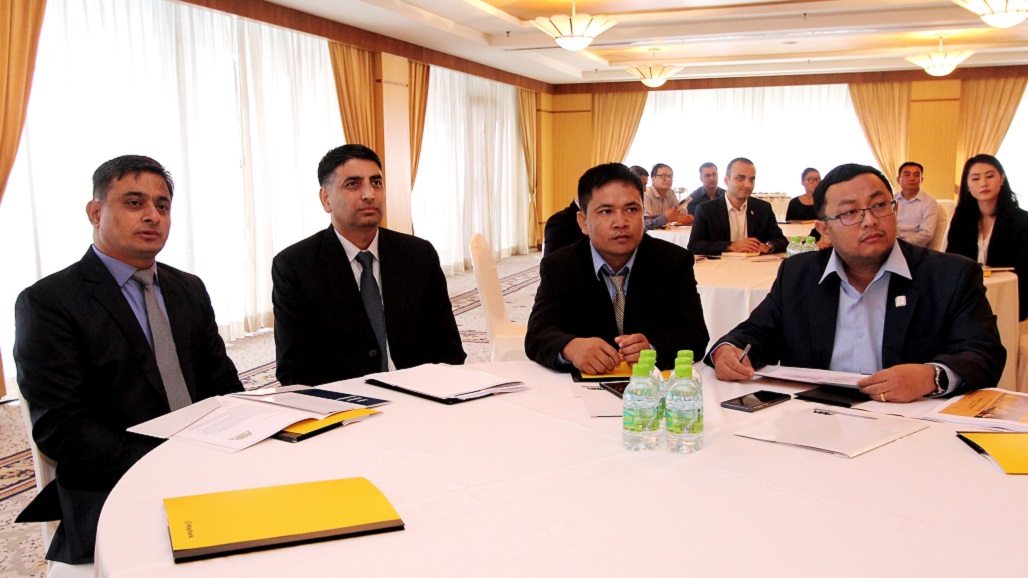

Leave a Reply